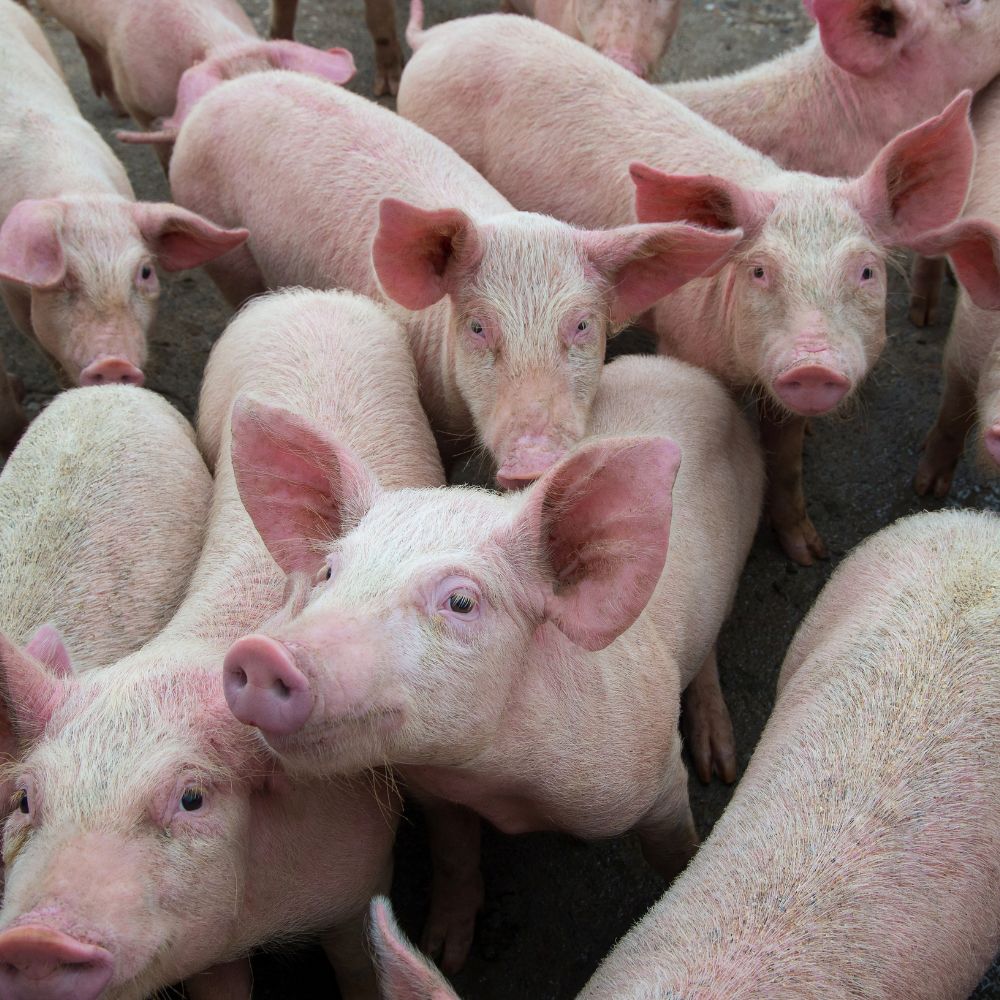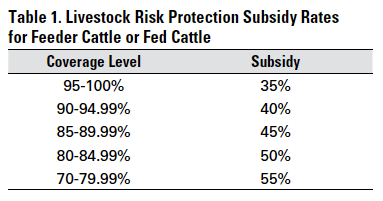Navigating Business Risks with Bagley Risk Management
Navigating Business Risks with Bagley Risk Management
Blog Article
Trick Variables to Think About When Choosing Livestock Risk Protection (LRP) Insurance Policy
When reviewing alternatives for Livestock Danger Protection (LRP) insurance coverage, numerous essential elements call for mindful factor to consider to ensure efficient risk monitoring in the farming industry. Choosing the ideal insurance coverage choices tailored to your certain livestock operation is paramount, as is recognizing how superior prices correlate with the level of security used.
Coverage Options
When taking into consideration Animals Danger Security (LRP) insurance policy, it is crucial to understand the various coverage alternatives offered to mitigate risks in the farming market. Animals Risk Protection (LRP) insurance provides different protection options customized to meet the diverse demands of livestock manufacturers.
One more important coverage option is the endorsement period, which figures out the size of time the insurance coverage holds. Producers can choose the endorsement period that best fits their manufacturing cycle and market problems. Furthermore, protection levels and rates vary based upon the kind of livestock being guaranteed, giving producers the flexibility to customize their insurance coverage intends according to their details requirements.
Recognizing the various insurance coverage options available under Animals Threat Protection (LRP) insurance policy is critical for manufacturers to make informed decisions that successfully safeguard their animals procedures from market uncertainties.
Costs Prices

Animals Risk Defense (LRP) insurance policy provides necessary protection choices customized to alleviate risks in the agricultural sector, with a considerable facet to take into consideration being the calculation and structure of premium expenses. These consist of the type and number of livestock being guaranteed, the insurance coverage degree selected, the present market costs, historical price data, and the size of the insurance coverage period.
Insurance companies analyze historic data on animals costs and manufacturing prices to establish an ideal premium that mirrors the degree of risk included. It is important for livestock manufacturers to carefully examine premium costs and protection options to ensure they are appropriately protected versus possible economic losses due to damaging market problems or unanticipated events.
Qualified Livestock
The decision of eligible animals for Animals Danger Protection (LRP) insurance policy coverage entails mindful consideration of particular requirements and attributes. Livestock kinds that are generally qualified for LRP insurance policy consist of feeder cattle, fed swine, cattle, and lambs. These pets must meet certain certifications connected to weight arrays, age, and meant usage. In addition, the qualification of livestock might differ based on the certain insurance provider and the terms of the plan.
Feeder cattle, for example, are frequently eligible for LRP insurance coverage if they fall within defined weight ranges. Fed cattle might likewise be eligible, however they have to meet certain weight and quality grade demands. Swine eligible for protection normally include market weight animals intended for slaughter. Lambs are an additional category of livestock that can be thought about for LRP insurance policy, with elements such as weight and age playing an essential function in establishing their qualification.
Before picking LRP insurance for livestock, producers ought to carefully evaluate the eligibility criteria laid out by the insurance policy service provider to ensure their pets satisfy the essential requirements for insurance coverage.
Policy Versatility
Policy adaptability in Livestock Threat Security (LRP) insurance coverage allows manufacturers to tailor insurance link coverage to suit their certain requirements and take the chance of monitoring methods. This adaptability equips livestock producers to customize their insurance coverage policies based on factors such as the kind of animals they have, market conditions, and specific threat resistance degrees. By supplying adjustable alternatives, LRP insurance policy allows producers to efficiently handle their danger direct exposure while safeguarding their animals procedures against unanticipated market volatility.
Cases Process
Upon experiencing a loss or damages, manufacturers can initiate the insurance claims process for their Animals Danger Defense (LRP) insurance policy by quickly contacting their insurance coverage provider. It is vital for manufacturers to report the loss asap to expedite the cases process. When connecting to the insurance service provider, manufacturers will certainly need to provide thorough info concerning the occurrence, including the day, nature of the loss, and any type of relevant documents such look at these guys as vet documents or market costs.

After the evaluation is full, the insurance service provider will decide pertaining to the case and interact the outcome to the producer. The manufacturer will receive compensation according to the terms of their Animals Danger Security (LRP) insurance policy if the case is accepted. It is vital for manufacturers to be acquainted with the claims procedure to ensure a smooth experience in case of a loss

Conclusion
To conclude, when selecting Animals Risk Security (LRP) insurance policy, it is necessary to think about coverage options, premium expenses, eligible animals, policy flexibility, and the insurance claims process. These crucial elements will aid make certain that herdsmans and farmers are sufficiently protected versus possible dangers and losses linked with their livestock operations. Making a notified choice based on these factors to consider can inevitably lead to much better economic safety and security and comfort for animals manufacturers.
Livestock Risk Protection (LRP) insurance coverage provides different coverage options tailored to satisfy the varied demands of animals producers.The resolution of eligible animals for Animals Threat Security (LRP) insurance policy protection entails mindful click this site consideration of particular criteria and characteristics.Policy adaptability in Animals Risk Defense (LRP) insurance coverage enables producers to customize insurance coverage to match their details demands and risk management techniques.Upon experiencing a loss or damages, manufacturers can start the cases procedure for their Animals Threat Security (LRP) insurance by quickly contacting their insurance policy company.In verdict, when selecting Animals Threat Protection (LRP) insurance policy, it is important to consider protection options, premium prices, eligible animals, policy adaptability, and the insurance claims process.
Report this page